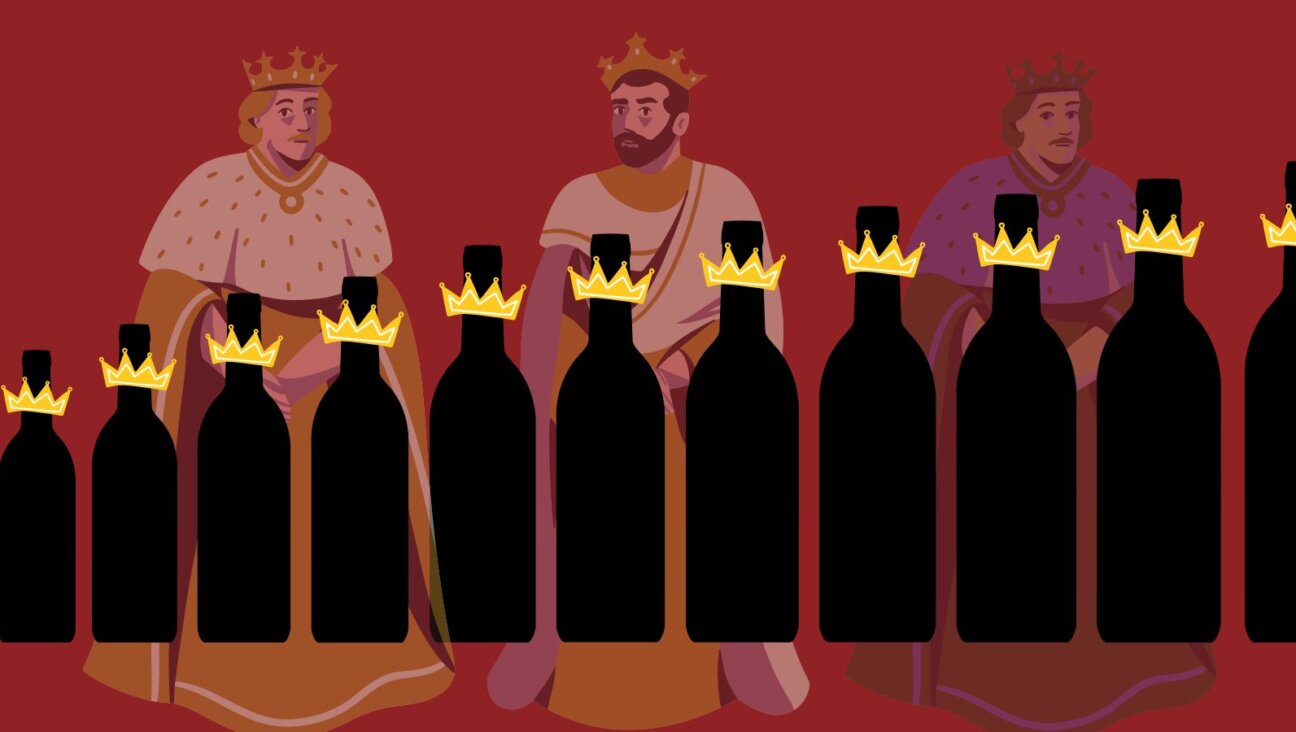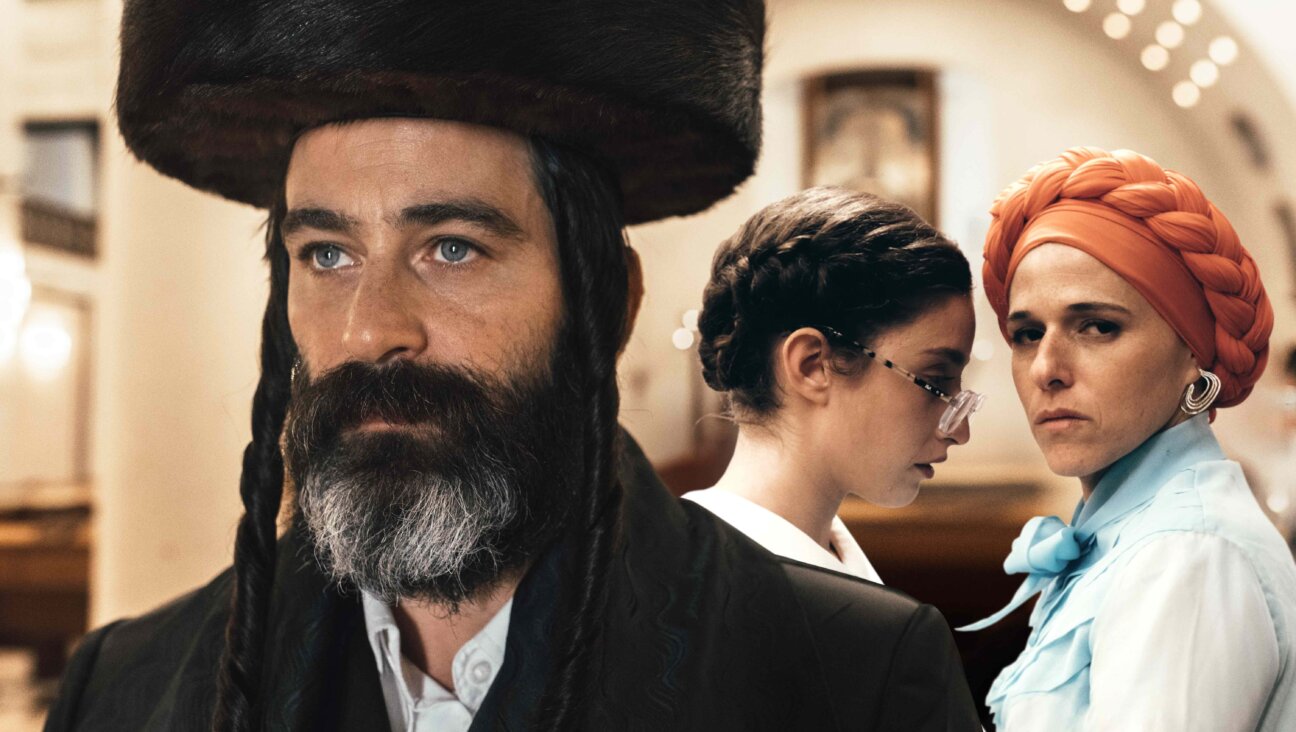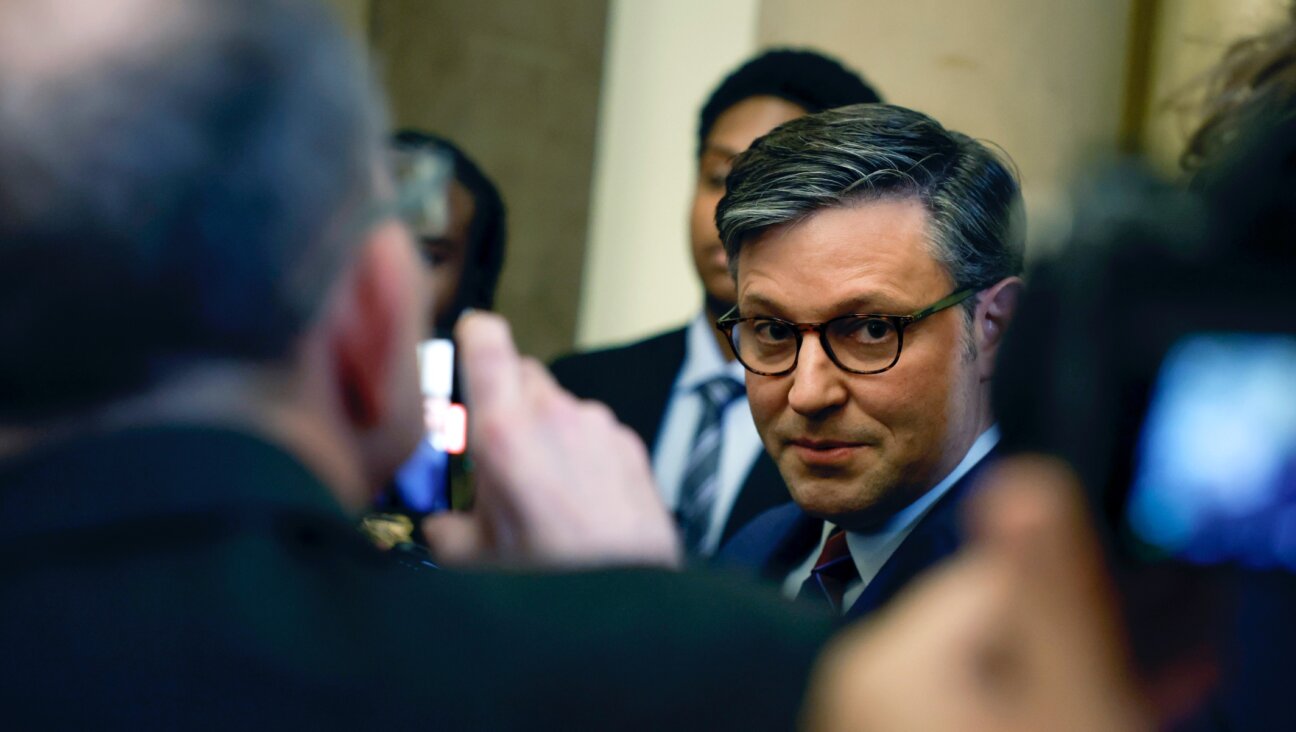Building Jewish Identity, Preschool Program Expands Its Reach
At a table in the rear of classroom 3 of the nursery school at the Jewish Community Center in Manhattan, several of the children, ages 3 and 4, pause from busily gluing photographs of the class Hanukkah party onto a large piece of brown paper to explain to a visitor what they’re doing.
“That’s my mommy and me,” Ben explained, pointing to a photograph. “We said the blessings, and we ate jelly doughnuts, and we drinked water, and we had latkes.”
“That’s me!” Joseph chimed in, pointing to his own photograph. “I’m lighting the candles, because we light the candles for Hanukkah.”
Jewish holiday celebrations and art projects are perennials at Jewish nursery schools, but Ben and Joseph’s school is trying to do things a little bit differently. The JCC in Manhattan is one of more than a dozen nursery schools across the country that are participating in a program called the Jewish Early Childhood Education Initiative. Founded in 2003, the program, known as Jecei, seeks to combine progressive education techniques imported from Italy with a deeply embedded Jewish curriculum. This year, the program is expanding to seven new schools.
The program’s boosters (who include mega-donor Michael Steinhardt) argue that Jecei schools not only can make for a better preschool experience, but also build Jewish identity for years to come.
“The theory of Jecei, which I totally believe, is that if children and families have a meaningful, richly connected experience in a Jewish early childhood program, they’re going to want more,” said Ilana Ruskay-Kidd, director of the JCC in Manhattan’s nursery school. “Not because I hammered it over their head that this is a Jewish thing, but they’re going to associate being part of this Jewish community with something meaningful.”
Jecei’s approach is rooted, in part, in the educational philosophy that stems from the city of Reggio Emilia, in northern Italy. Highly popular among progressive educators, the Reggio Emilia approach aims to put the interests and activities of the children at the center of how they learn and play.
For example, when classroom 3’s children became interested in playing with cameras, photography became a major classroom activity, and the room now has a photography corner complete with working cameras and pictures taken by the children. (Another classroom has a corner devoted to airplanes.)
Teachers also work to document the children’s classroom experiences. They take pictures, solicit quotes from children about what they are doing or thinking, and post artwork in places where it can be seen by parents and by children — high on the wall for parents, close to the floor for children.
“The most important component is just to look at the children as individuals, as competent, as learners, and address them where they are. A lot of people don’t give little guys the credit that they deserve,” said Elyse Adlen, preschool director at Temple Sinai in Denver, which just started participation in Jecei this year. “A lot of it is the teacher being in the shadow instead of directing the whole class — asking the right questions and setting up activities.”
This child-centered approach, in turn, is combined with a series of Jewish principles that Jecei’s creators have decided are essential to a Jewish preschool experience, including such elements as a sense of wonder, respect and the importance of dialogue.
Of course, none of these ideas is exclusively Jewish, and different schools have tailored Jecei’s elements in different ways. For example, Jordana Bernstein, director of early childhood education at the Modern Orthodox Akiba Academy in Dallas, said that her teachers talk explicitly about Jewish concepts in the classroom.
“There are certain things from the children that aren’t going to just emerge. There’s Jewish stuff you have to teach them,” Bernstein told the Forward. “We do a little bit of tefilah *every day. There’s a prayer they say when they wake up; they say the Shema, and after the Shema, we say there’s only one *Hashem. We give tzedakah every day.”
But Ruskay-Kidd said that she is less concerned about the children absorbing Jewish knowledge from the program than she is about them acquiring Jewish values. She related the story of a student who announced that he would make a card for his ailing aunt. “It’s a mitzvah,” the student said.
“Do I care that he used the word ‘mitzvah’?” Ruskay-Kidd said. “Not necessarily. I’m more concerned that he wants to make a card for his aunt. But he’s connecting it back to something he’s been exposed to at school, which is the many ways that we take care of one another.”
Even so, some of the children have their own ideas. Back in classroom 3, teacher Lindsey Stranahan lit the Sabbath candles and tried to guide her children into the spirit of the ritual.
“Shabbat is a special quiet time,” she told her students. “This is no time to be really silly.”
“I’m not being really silly,” Charlie protested. “I’m just being a little bit silly.”

I hope you appreciated this article. Before you go, I’d like to ask you to please support the Forward’s award-winning journalism this Passover.
In this age of misinformation, our work is needed like never before. We report on the news that matters most to American Jews, driven by truth, not ideology.
At a time when newsrooms are closing or cutting back, the Forward has removed its paywall. That means for the first time in our 126-year history, Forward journalism is free to everyone, everywhere. With an ongoing war, rising antisemitism, and a flood of disinformation that may affect the upcoming election, we believe that free and open access to Jewish journalism is imperative.
Readers like you make it all possible. Right now, we’re in the middle of our Passover Pledge Drive and we need 500 people to step up and make a gift to sustain our trustworthy, independent journalism.
Make a gift of any size and become a Forward member today. You’ll support our mission to tell the American Jewish story fully and fairly.
— Rachel Fishman Feddersen, Publisher and CEO
Join our mission to tell the Jewish story fully and fairly.
Our Goal: 500 gifts during our Passover Pledge Drive!
























